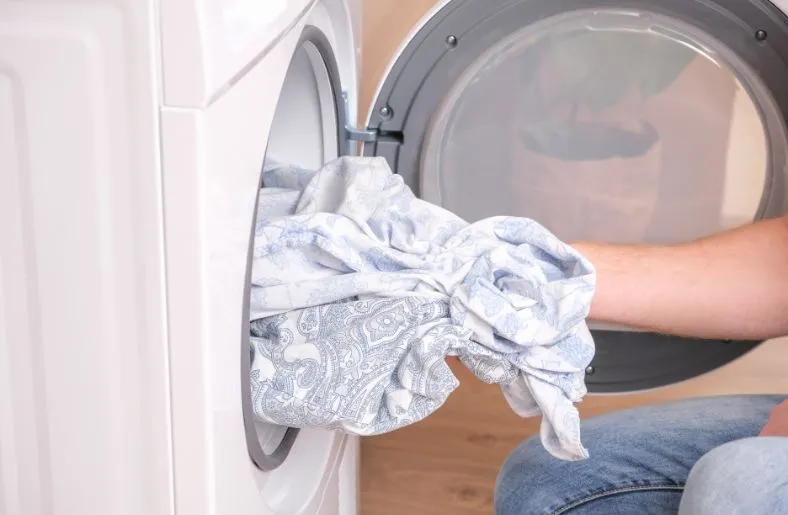A squeaky dryer can be a frustrating and annoying household problem. It not only disrupts the peaceful ambiance of your home but also signals that your dryer might need some maintenance. Fortunately, addressing this issue is relatively straightforward.
In this guide, we will explore the steps on how do you lubricate a squeaky dryer, extending the life of your appliance and restoring tranquility to your laundry room.
Table of Contents
Squeaky Dryer
Before we delve into the lubrication process, it’s essential to understand why your dryer might be making those irritating noises. A squeaky dryer can be caused by a variety of factors:
- Worn or Misaligned Belts: Most dryers have a drive belt that turns the dryer drum. Over time, this belt can become worn, frayed, or misaligned, leading to squeaks or squeals.
- Roller Bearings: Dryers have roller bearings that support the dryer drum. If these bearings become worn or dirty, they can produce squeaking sounds as the drum turns.
- Idler Pulley: The idler pulley is responsible for keeping tension on the drive belt. If it becomes faulty, it can lead to squeaks and squeals.
- Lack of Lubrication: Over time, the moving parts of a dryer may lose their lubrication, causing friction and noise.
Now that we’ve identified some common reasons for a squeaky dryer, let’s move on to the steps of how do you lubricate a squeaky dryer.
How do you Lubricate a Squeaky Dryer: A Step-by-Step Guide
Step 1: Safety First
Before you start working on your dryer, always ensure your safety. Unplug the dryer from the electrical outlet to avoid any potential hazards. Additionally, make sure you have a clean, well-ventilated workspace to prevent dust and lint from causing problems during the process.
Step 2: Gather Your Tools
You’ll need a few tools and materials for this task. Here’s a list of what you’ll require:
- A screwdriver
- A putty knife
- A vacuum cleaner with a nozzle attachment
- A lubricant (white lithium grease or a silicone-based lubricant)
- Replacement parts (if necessary)
Step 3: Access the Dryer’s Interior
To lubricate the components causing the squeak, you’ll need to access the interior of your dryer. Here’s how to do it:
- Remove the lint filter from the dryer.
- Locate and remove the screws holding the dryer’s top panel in place. These screws are often found along the inside edge of the door frame or the back of the dryer. Once the screws are removed, you should be able to lift the top panel.
Step 4: Identify the Problematic Components
Once you have access to the dryer’s interior, you can start identifying the components that might be causing the squeak. Here are some common areas to check:
- Drive Belt: Examine the drive belt for signs of wear, fraying, or misalignment. If it’s worn or misaligned, you may need to replace it.
- Roller Bearings: Check the roller bearings that support the drum. They should spin freely and without any noise. If they are worn or dirty, it’s a good idea to clean and lubricate them.
- Idler Pulley: Inspect the idler pulley for any signs of damage or wear. If it’s the source of the noise, you might need to replace it.
Step 5: Lubricate the Problematic Areas
Now that you’ve identified the components causing the squeak, it’s time to lubricate them. Here’s how to proceed:
- Drive Belt: If your drive belt is causing the noise, it’s best to replace it rather than lubricate it. Worn belts can snap and cause further damage if not addressed promptly. You can purchase a replacement belt from your dryer’s manufacturer or a local appliance parts store.
- Roller Bearings: To lubricate the roller bearings, use a vacuum cleaner with a nozzle attachment to remove any dust or lint that may have accumulated. Once clean, apply a small amount of lubricant to the shaft of each roller. Turn the rollers by hand to ensure the lubricant is evenly distributed.
- Idler Pulley: If the idler pulley is the culprit, you can lubricate it by applying a small amount of lubricant to its moving parts. Turn the pulley by hand to distribute the lubricant evenly.
Step 6: Reassemble the Dryer
After you’ve completed the lubrication process and ensured that all components are in good working order, it’s time to reassemble the dryer. Here’s how:
- Place the top panel back in its original position and secure it with the screws you removed earlier.
- Reinsert the lint filter.
- Plug the dryer back into the electrical outlet.
Step 7: Test the Dryer
Before you start a full load of laundry, it’s a good idea to test the dryer to make sure the squeaking noise is gone. Run the dryer empty for a short cycle to confirm that the problem has been resolved.
Step 8: Regular Maintenance
To prevent future squeaks and maintain your dryer’s smooth operation, consider implementing regular maintenance:
- Clean the lint filter after every use to prevent lint buildup in the dryer’s components.
- Check and lubricate the roller bearings and idler pulley annually to prevent future squeaking issues.
- Inspect the drive belt for signs of wear and replace it if necessary.
Related Guide: How to Lubricate Fuel Injectors for Optimal Engine Performance (2023-2024)?
FAQs
1. What can I use to lubricate my dryer?
Grease or nothing would be better than oil here. Oil and grease will attract lint and dust and seize sooner. I have used a spray of Teflon and graphite as the lube on my dryers with graphite lasting longer.
2. Can I still use my dryer if it’s squeaking?
While a squeaky dryer doesn’t pose an immediate danger, it should raise a red flag. That bothersome squeaking sound is a sign that one or more of your dryer’s parts are malfunctioning. Be careful not to dismiss this as a simple machine malfunction.
3. How do I stop my dryer from squeaking?
If the dryer sits on screwed-in legs, simply tightening them can fix the issue. Alternatively, sometimes a dryer squeaks when running because of small foreign objects in the dryer’s drum or lint filter. Coins, paper clips, and other similar items can easily be found in the drum and removed.
Conclusion
A squeaky dryer can be a nuisance, but with the right tools and a bit of knowledge, you can lubricate a squeaky dryer and enjoy a quieter laundry experience. By identifying the problematic components, cleaning, and lubricating them, you can extend the life of your dryer and maintain its efficiency.
Remember to prioritize safety, and if you’re uncomfortable performing these maintenance tasks yourself, don’t hesitate to seek the help of a professional technician. With a well-maintained dryer, you can look forward to many more loads of peaceful and efficient laundry.

